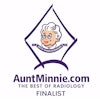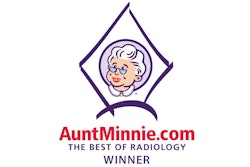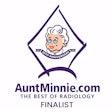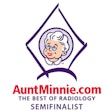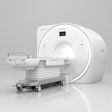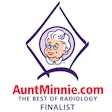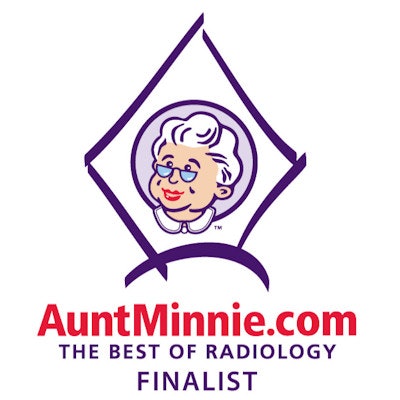
Who made it to the final round in the 2025 edition of the Minnies, AuntMinnie.com's event recognizing excellence in radiology? See below to find out who our expert panelists selected as the final candidates in this year's event, which covers the period of September 1, 2024 to September 1, 2025.
The Minnies finalists were drawn from over 100 candidates across 15 categories. You can also view a full list of candidates based on nominations from our members.
In the next round of voting, our expert panel will vote on the finalists, with winners announced in November.
Most Influential Radiology Researcher
Eric Christensen, PhD, Harvey L. Neiman Health Policy Institute
Economist Eric Christensen, PhD, tends to think that "economic incentives influence people whether they notice or not." He approaches his radiology research at the Harvey L. Neiman Health Policy Institute with the questions of what his subjects might be expected to do given economic incentives and how these incentives influence their choices in mind.
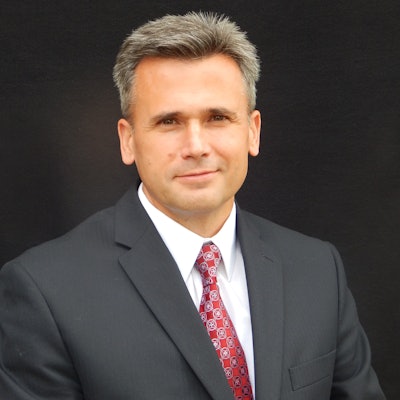 Eric Christensen, PhD.
Eric Christensen, PhD.
"As much as people want healthcare to be altruistic, it's influenced by the business reality," he said.
Christensen earned his PhD in Economics at the University of Illinois, Urbana-Champaign, and has been a health economist his whole career. In 2021, he joined the HPI team. He and his colleagues regularly poll experts regarding what topics are of interest in radiology and what trends are coming, and keep track of legislative changes.
In the past few years, Christensen has published research about Black women's access to new mammography technology, rates of nonradiologists' interpretation of office-based imaging, potential causes of a future radiology workforce shortage, and how images read by nonphysician practitioners are often repeated. His current research interests include workforce issues, such as attrition and turnover, the use of theranostics -- particularly how far patients have to travel to access treatment -- and the use of AI in patient care.
"In my research, I hope to put an economic face on what is going on in healthcare economics, particularly radiology," he said.
Florence X. Doo, MD, University of Maryland School of Medicine
Florence X. Doo, MD's research focuses on translating technologies to improve clinical patient care, with a focus on safe, reliable, and sustainable applications of AI and informatics. She explores the real-world impact of AI on radiology, including workflow transformation and long-term sustainability.
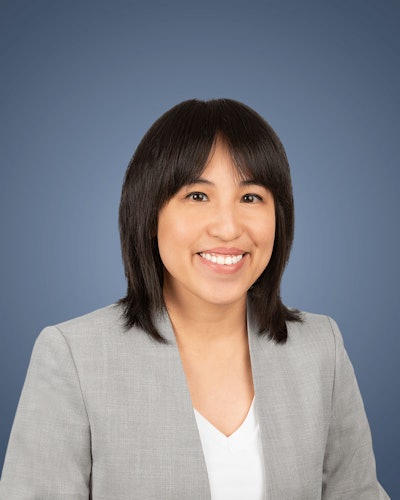 Florence X. Doo, MD.
Florence X. Doo, MD.
"My work is based on the idea that we are part of a human-AI ecosystem that has a repeating cycle -- bench-to-beside-to-planet," she said.
Doo is an abdominal radiologist and director of innovation at the University of Maryland Medical Intelligent Imaging (UM2ii) Center. She also leads the medical imaging AI research program at the university's Institute for Health Computing and serves on both the RSNA Technology and Policy Subcommittee and the American College of Radiology's (ACR) Sustainability Committee.
Her interest in research emerged as she encountered issues in radiology that "deserve deeper understanding" -- particularly AI and sustainability.
"As we continue to use AI, we're going to use more chips, more cloud, and we need to investigate how this will impact radiology -- and healthcare overall," she said.
She has published work on real-world applications of generative AI in radiology and a guide to open-source LLMs, and is currently engaged in research funded by the U.S. National Institute of Health's (NIH) Clinical and Translational Science Award (CTSA) on the safety of AI systems. She has also published work exploring the sustainability of radiology AI ecosystems -- including quantifying the energy costs of AI and the costs of cloud technologies (this study was funded by the AAR CERRAF grant).
"We need to build trustworthy AI for patients and our planet," she said. "The fun part is that no one knows what that looks like. We get to shape the future together."
Most Effective Radiology Educator
Lea Alhilali, MD, Arizona State Shufeldt School of Medicine and Medical Engineering
Lea Alhilali, MD, knows that there's "incredible demand" for understandable radiology education that's conveyed in new ways -- such as on social media.
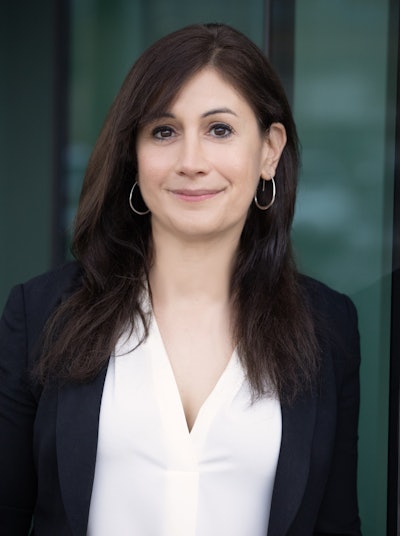 Lea Alhilali, MD.
Lea Alhilali, MD.
"Social media is where people are getting their news -- for better or worse -- and it offers an opportunity for radiologists to put out reliable, accurate content," she said.
Alhilali came to her current post at Arizona State from Barrow Neurological Institute (both of which are in Phoenix) and is now part of the team working to establish a radiology department at the new medical school there. She is also in charge of the school's medical student rotation program.
She hasn't always identified as a radiology educator. Her shift to education came after years of "traditional academics" at Harvard Medical School, UT Southwestern Medical Center, Barrow, and University of Pittsburgh, when it occurred to her that "writing papers about how this imaging finding or that one would improve specificity wouldn't have the same long-lasting effect as teaching other doctors how to take good care of patients would."
In addition to her duties at Arizona State, Alhilali serves as senior editor for education for the American Journal of Neurology, seeking to make journal content available to readers in a way that will allow them to effectively apply it clinically. She is also associate editor of social media and digital innovation for Radiographics, deputy editor for Clinical Neuroimaging, and is connected to the peer-reviewed, open-access radiology resource Radiopaedia.org, which hosts a page with links to her lectures -- some of which offer continuing medical education credits. This year, Alhilali was a co-convener of Radiopaedia's annual virtual conference. On her own X and Instagram accounts, she has 67,000 and 105,000 followers, respectively.
Matthew Hartman, MD, Allegheny Health Network
The second finalist in this category is abdominal imager Matthew Hartman, MD, of Allegheny Health Network (AHN) in Pittsburgh, PA. Hartman came to his career in radiology in part due to the influence of his father, David Hartman, MD, who was on the faculty of the Armed Forces Institute of Pathology (AFIP) for decades while also serving as a Navy radiologist for 20 years and then as a professor of radiology for 20 years more at Pennsylvania State University.
 Matthew Hartman, MD.
Matthew Hartman, MD.
It was his father's work for the AFIP that introduced Hartman to the RADPath curriculum, which is a key part of his teaching efforts. (RADPath is a radiology-pathology correlation system for radiology reports and procedures.)
"I was a resident at Emory [Emory University School of Medicine in Atlanta, GA] when my dad was teaching at AFIP, and that's where I learned about RADPath," he said. "I adapted it for use with medical students."
Hartman's educational efforts aren't limited to his work at AHN. He's a member of the Alliance of Medical Student Educators in Radiology (AMSER) and was instrumental in launching the RADPath Case of the Month. He posts RADPath lectures on YouTube and offers RADPath Pearls on TikTok. And he was part of a team that created the Standardized Tool for the Assessment of Radiology Students (STARS) -- a collaborative effort between AMSER and the American College of Radiology (ACR).
Teaching has been a key part of Hartman's career, and he takes great satisfaction in it.
"It's important to 'pay forward' what we ourselves have learned," he said. "There's nothing more fun and gratifying than sharing your knowledge."
Most Effective Radiologic Sciences Educator
Tobias Gilk, Gilk Radiology Consultants, Overland Park, KS
Tobias (Toby) Gilk stands out for his dedication to MRI safety education and consulting, and risk management practices.
 Tobias Gilk.
Tobias Gilk.
Through his work in radiology and medical imaging design architecture, Gilk discovered a lack of MRI safety awareness and training. He has been consulting radiology practices and device manufacturers ever since, becoming an American Board of Magnetic Resonance Safety (ABMRS)-certified MR Safety Expert (MRSE) and MR Safety Officer (MRSO).
In 2014, Gilk founded Overland Park, KS-based Gilk Radiology Consultants. His firm provides radiologist and staff training, procedure and best-practice guidance, and regulatory compliance reviews.
Having a contemporary frame of reference for technologist education and training in MRI safety -- especially for new learners -- is important to Gilk. This year, he celebrated the first print and eBook publication of "The Technologist MRI Safety Handbook," which he co-authored with Douglas Boyd of the Smith Chason College in Arizona and Peter Jablonka, co-founder of Alpha RT and formerly of RadNet.
Gilk, a twice former member of the American College of Radiology (ACR) MRI Safety Committee, is also a named co-author for three ACR MRI Safety Committee publications (2007 ACR Guidance Document, 2019 Updates and Critical Information, and 2020 ACR Manual on MR Safety).
Gilk still guides imaging and therapy equipment integrations, site planning, and master planning as senior vice president of design at architecture firm RAD-Planning. In addition, he is a volunteer member of the Technical Expert Panel (TEP) of the National Quality Forum and evaluates serious reportable events (SRE). He has also previously served as chair of the ABMRS.
An outspoken voice for MRI safety, Gilk continues to expand his MRI knowledge in his daily work and in pursuit of a doctorate in the prevention of accidents and injuries in MRI at the University of Missouri-Kansas City.
Jennifer Thompson, Austin Peay State University, Clarksville, TN
Jennifer Thompson leads the radiography program in the department of Allied Health Sciences at Austin Peay State University in Clarksville, TN.
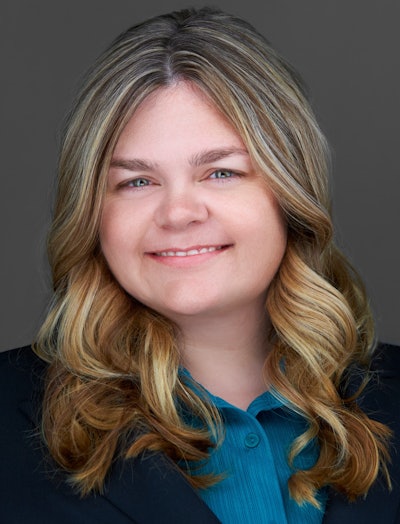 Jennifer Thompson
Jennifer Thompson
A Minnies semifinalist in 2024, Thompson continues to inspire radiography students to excel at Austin Peay and grow both personally and professionally. She is described as a great program director and teacher.
Thompson demonstrates innovation and creativity in the classroom and beyond. Among her approaches is leading a delegation of Austin Peay students on biennial trips to explore the history of x-rays in Europe. Some of Thompson's students haven't been to destinations far beyond Clarksville, much less 11 days traveling by train across Europe to the most storied historical sites connected to x-ray and medical and biological radioactivity research.
Adding the title of nationally recognized speaker to her achievements, Thompson takes the American Society of Radiologic Technologists (ASRT)'s "Be Seen" Campaign to an extraordinary level. First, students join Thompson for speaking engagements and talk about their experience in the profession.
Thompson also advocates for radiography students and more meaningful and varied interprofessional relationships for them. To that end, she has designed over a dozen simulation sagas calling on various professionals to stage different patient experiences with radiography students.
In addition, this year she led the development of the Tennessee Society of Radiologic Technologists' annual meeting in October and played a pivotal role in the development of Austin Peay's new Health Professions Building that opened in August 2025.
Thompson began her journey at Austin Peay in pursuit of a job, but her time there is becoming an exciting educational legacy. In 2021, Thompson obtained her doctorate of education in learning organizations and strategic change from Lipscomb University. She has been teaching at Austin Peay for 17 years. She is past president of the Tennessee Society of Radiologic Technologists and has served on the ASRT board of directors.
In 2024, Thompson received the ASRT Advocacy Award. She also received the 2024 Radiation Therapist Distinguished Author Award in Honor of Harold Silverman. Most notably, she was the 2023 ARRT "I Am the Gold Standard" winner for her advocacy efforts.
Most Effective Radiology Administrator/Manager
Ashley Darby, University of Mississippi Medical Center (UMMC) and Children's of Mississippi, Jackson, MS
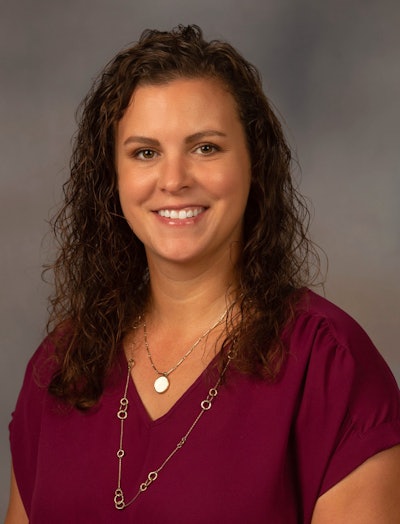 Ashley Darby
Ashley Darby
Ashley Darby's role as director of imaging services at University of Mississippi Medical Center (UMMC) and Children's of Mississippi in Jackson took a sharp turn this year when she pivoted into the role of executive director of health system clinical operations.
Darby relishes the challenge, and it comes at a time of great change in the academic medical system. For example, UMMC this year completed the acquisition of Merit Health Madison Hospital, located in Canton, approximately 20 miles away from UMMC's main Jackson metro campus.
The hospital acquisition, combined with other capital projects, means radiology services are changing at UMMC. The system is leaning into cutting-edge theranostics, offering Pluvicto and Lutathera and companion imaging, while leveraging diagnostic imaging demand shifts to offer new services such as cardiac PET soon.
On the way is a women's health initiative, a modernized approach that includes a new centralized breast imaging department planned to relocate back to UMMC's main campus. Also, UMMC has embarked on building a new teaching facility nearby in Ridgeland, MS, that will house UMMC's first ambulatory surgical center.
Instead of hands-on imaging, Darby is currently focusing on strategy and growth -- applying her over 20 years of imaging management experience and strong clinical background in diagnostic radiology, CT, general ultrasound, and vascular ultrasound to UMMC's needs. Much of the advanced imaging in the state of Mississippi takes place at UMMC. However, the system maintains three community hospitals and outreach and collaborative care arrangements throughout the state.
Darby, in her new role, now directs not only imaging services but cardiology, neurophysiology, and UMMC's internal patient transport team. Her Six Sigma Green Belt helps toward continuous improvement and optimal operations in the health system.
Nominated for a Minnie award in 2023 and 2024, Darby is affiliated with the Mississippi Chapter of the American College of Healthcare Executives. She holds a master's degree in business administration, specializing in project management, and a master's degree in health administration, both obtained from Louisiana State University Shreveport.
Darby is also an active member of several organizational committees, including the UMMC Human Resources Advisory Council, Healthcare Workplace Violence Committee, Healthcare Compliance Management Committee, Children's Information Technology Committee, Epic Clinical Oversight Committee, and Children's Ambulatory Safety Team.
Terri Franklin, University of Alabama Birmingham (UAB) Hospital and UAB Highlands, Birmingham, AL
Terri Franklin began her career at the University of Alabama Birmingham (UAB) 25 years ago, becoming director of radiology for UAB Highlands and UAB Hospital just over three years ago.
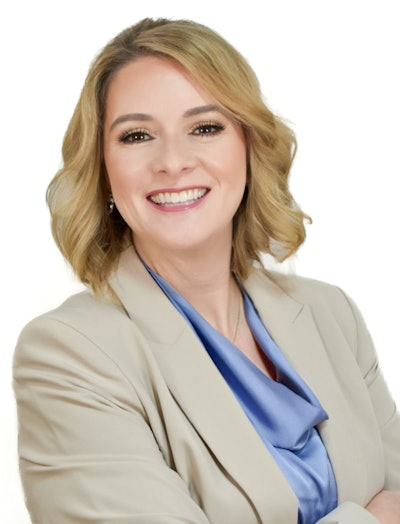 Terri Franklin.
Terri Franklin.
After pivoting from her first degree in criminal justice to the radiologic sciences, she started as a radiologic technologist. Franklin's journey took her from lead tech to imaging manager of UAB Highlands before the larger directorship encompassing UAB Hospital in downtown Birmingham, AL.
Much has changed in the way healthcare is viewed, and Franklin has worked through it all at UAB. Post-COVID, the department adapted to recruiting and retention using more work/life balance-friendly strategies.
New to her list of accomplishments is co-developing an in-house radiology program that is expected to launch next fall with five students. It's an opportunity for newcomers to become a student tech (an entry-level role), prepare for the American Registry of Radiologic Technologists exam, and then work for at least two years at UAB.
Change management is a must for Franklin. Late last year, UAB Health System acquired nearby Ascension St. Vincent's Health System to form UAB St. Vincent's, creating new opportunities for collaboration with St. Vincent's and other UAB hospital site radiology directors.
For the past two years, Franklin has presented at the Association for Medical Imaging Management (AHRA) national conference. She is a graduate of Gadsden State Community College in Gadsden, AL, and went on to achieve a bachelor's degree in radiologic technology and science from AdventHealth University. In 2014, Franklin obtained her master's degree in health informatics from UAB.



